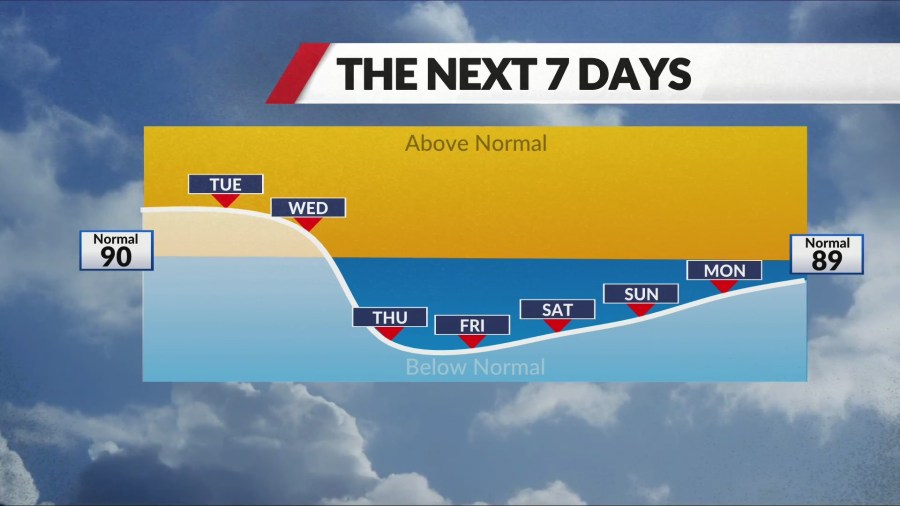
ST. LOUIS – The St. Louis metro area remains in the grip of a disgusting heat wave, with heat index values at least 10 degrees warmer than the thermostat. But relief is in sight!
Beginning Wednesday night, a cold front will make its way to St. Louis to nudge away the heat and lower the humidity. We’ll be looking at a much more comfortable end to the workweek and weekend, with temperatures in the low 80s.
“But wait!” you say. “Shouldn’t a cold front actually feel, you know, cold?” Or maybe you’re one of those types who think a cold front doesn’t count unless the temperature drops below a certain number or you need a windbreaker.
Despite what you may believe, there is a scientific definition for both a cold front and a warm front.
A “cold front” marks the leading edge of a mass of colder air that is advancing and replacing a warmer air mass. The term is derived from military parlance, in which soldiers are sent to the front lines.
A cold front is marked by a pressure trough, a disturbance in the jet stream, and often a drop in temperatures – but not always. Sometimes the temperature difference behind a front can be subtle, but in the case of this week’s cold front, it will certainly be very noticeable.
In fact, temperatures can—on some occasions—rise behind a cold front. That depends on the cloud cover tampering with the low-level air mass. The front itself is not just a surface feature; it extends high into the atmosphere.
Don’t be confused; not every drop in temperature is the result of a cold front. You need the jet stream support and other factors for it to be a cold front. Other decreases in temperature are the result of outflow boundaries from thunderstorms. In those cases, the rainfall has cooled the air in the vicinity of the storm. And, of course, the temperature usually drops at night as well.
A cold front—or Mother Nature, if you prefer—doesn’t care whether you need a jacket or how many degrees the temperature drops. It could be a negligible difference in temperature or 20 degrees or more. It depends on the density of the air, shifting winds, and the jet stream.
Because we’re projected to meet the meteorological requirements for a cold front later in the week, we’ve got a cold front. We will see a noticeable change in temperature as well. Even if it’s still warm outside, it’s still a cold front.




